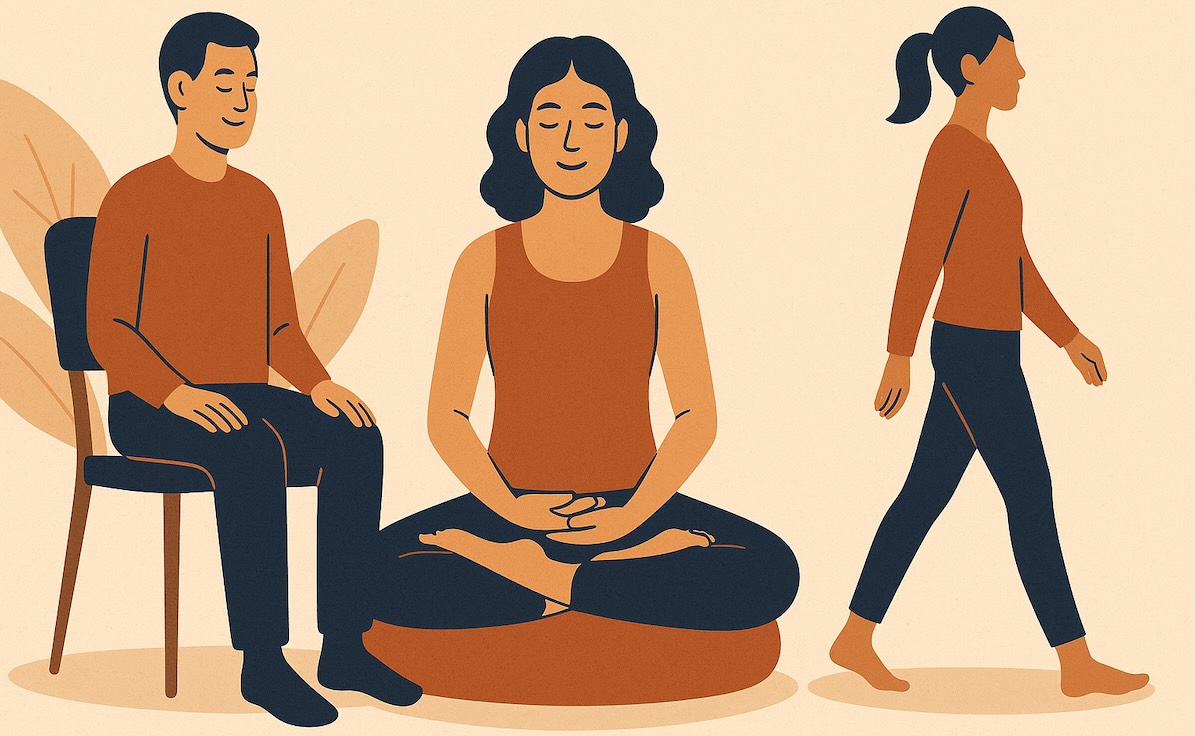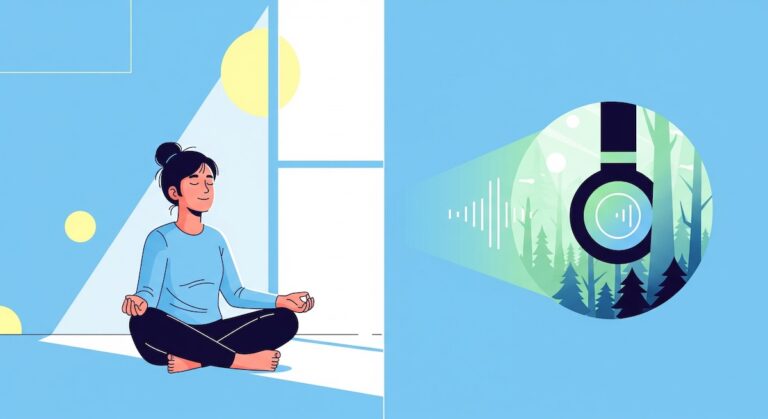So, you’ve decided to give meditation a try (awesome!) or maybe you’re looking to refine your practice. One of the first practical questions that pops up is: “How exactly should I be?” Do you need to sit like a pretzel? Can you just lie down? Does it even matter?
The short answer is: comfort and alertness are key. Your meditation posture isn’t about looking a certain way; it’s about creating a stable foundation for your mind to do its work. Let’s explore the most common options, including whether you can meditate lying down or even while walking.
The Classic Choice: Sitting Meditation
This is often what people picture when they think of meditation. Sitting offers a great balance between relaxation and alertness.
- Sitting in a Chair: Perfect for beginners or anyone who finds floor sitting uncomfortable.
- How: Sit with your feet flat on the floor, spine naturally upright but not stiff (imagine a gentle string pulling the crown of your head upwards). Let your hands rest comfortably on your lap or thighs. Avoid slouching or leaning back too much, which can lead to drowsiness.
- Pros: Accessible, requires no special equipment, good for maintaining alertness.
- Sitting on the Floor (Cushion/Bench): Many find this grounding.
- How: Use a firm cushion (zafu) or a meditation bench to elevate your hips slightly above your knees. This helps maintain the natural curve of your spine. You can sit cross-legged (like Sukhasana/Easy Pose), half-lotus, or kneel straddling a bench. Experiment to find what works without straining your knees or hips.
- Pros: Can feel very stable and grounded, traditional posture for many practices.
- Cons: Can be challenging if you have tight hips or knee issues; might require some flexibility.
Can You Meditate Lying Down? Yes, But…
Ah, the siren call of meditating in bed or on the couch! Yes, you absolutely can meditate lying down. It’s fantastic if sitting upright is painful or uncomfortable.
- How: Lie on your back, preferably on a slightly firm surface (like a yoga mat on the floor, or your bed if it’s not too soft). You can place a small pillow under your head if needed, and maybe one under your knees to ease lower back tension. Let your arms rest alongside your body, palms facing up or down.
- Pros: Very comfortable, accessible for almost everyone, great for body scan meditations.
- The Big Con: It’s very easy to fall asleep! The goal of most meditation is awareness, not slumber.
- Tips to Stay Awake While Lying Down:
- Keep a slight bend in your knees, feet flat on the surface.
- Keep your eyes slightly open (soft gaze towards the ceiling).
- Make a conscious intention to stay aware before you start.
- If you keep drifting off, try a sitting posture instead for focus-based meditations.
Taking it Outside: Can You Meditate While Walking?
Absolutely! Walking meditation is a wonderful practice for bringing mindfulness into movement.
- How: This isn’t about getting somewhere; it’s about the experience of walking. Find a place where you can walk back and forth slowly without obstacles (a room, hallway, quiet path). Walk at a natural, perhaps slightly slower-than-usual pace. Pay attention to the physical sensations: your feet lifting, moving through the air, connecting with the ground. Coordinate your breath with your steps if you like.
- Pros: Great for restless energy, connects you to your body and environment, and can be done almost anywhere.
- Note: This deserves its own deep dive!
Eyes Open or Closed?
Most beginners find closing their eyes helps minimize visual distractions. However, you can also meditate with your eyes open:
- Eyes Closed: Reduces external stimuli, can feel more internal. It might lead to sleepiness for some.
- Eyes Open: Keep a soft, unfocused gaze directed downwards a few feet in front of you. Helps stay alert and can be useful for integrating mindfulness into daily life. It can be more distracting initially.
Try both and see what helps you focus better right now.
Meditating in Unconventional Places? (Shower, Driving?)
- Shower: You can practice mindfulness in the shower, noticing the water temperature, the smell of soap, and the sounds. It’s about bringing awareness to the present moment.
- Driving: Crucial Safety Note: You should NEVER practice traditional, closed-eye meditation while driving. However, you can practice mindful driving, being fully present with the act of driving, noticing your surroundings, your grip on the wheel, without zoning out or getting lost in thought loops. Your focus MUST remain on driving safely.
Conclusion: Your Body, Your Practice
There’s no single “correct” meditation posture. The best posture is one that allows you to be comfortable enough to sit (or lie, or walk) for your chosen duration, but alert enough to remain present and aware. Experiment! Listen to your body. Some days you might prefer a chair, others a cushion. The goal is to find a sustainable foundation for your inner exploration.




